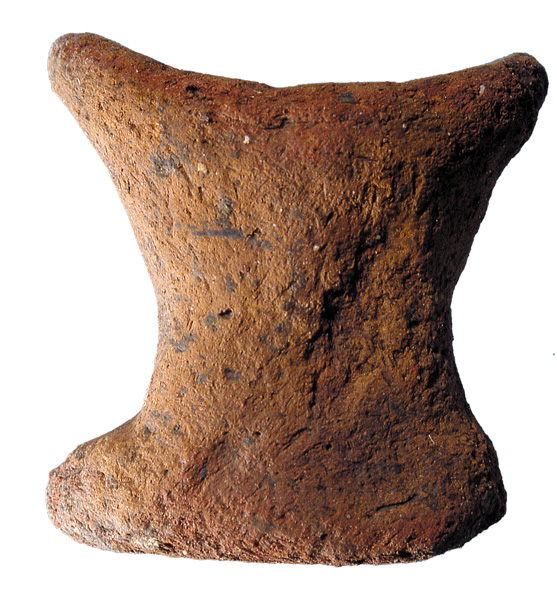
A. Yarn spool from Greece
B. Headrest from Egypt
C. Petrified dog biscuit from Pompeii
D. Copper ingot from Edom
E. Loom weight from Ur
Answer: (B) headrest from Egypt
This 5.5-inch-high stone headrest was excavated in a tomb at Tell Ibrahim Awad in the eastern Nile Delta. Part of a larger cemetery that dates between the First Intermediate period and the middle of ancient Egypt’s 12th Dynasty (c. 2475–1900 B.C.E.), the tomb contained rather meager finds, including plaster fragments and traces of decayed reed mats. Only the skull of the deceased man, aged 20–25, remained in place with the headrest underneath. Although this example is relatively crude in form, headrests were popular throughout ancient Egypt, and some pharaonic burials contained elegant versions made of wood, ivory and gold. In Egypt headrests were believed to protect the head of the deceased from evil spirits and sometimes bore magical inscriptions.
Already a library member? Log in here.
Institution user? Log in with your IP address.

